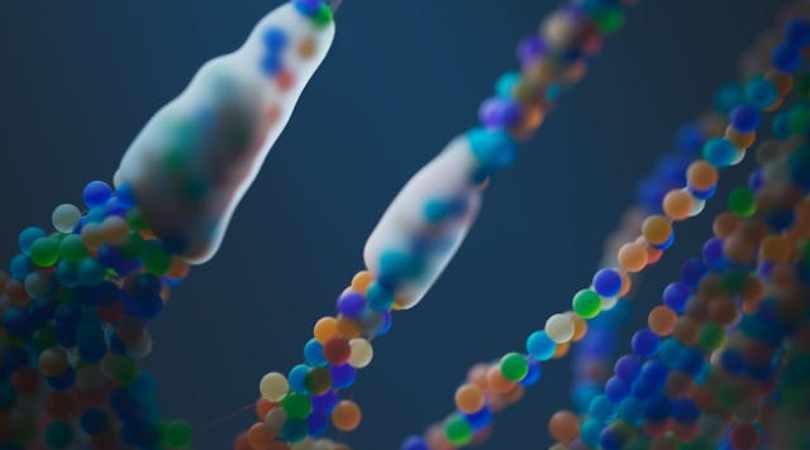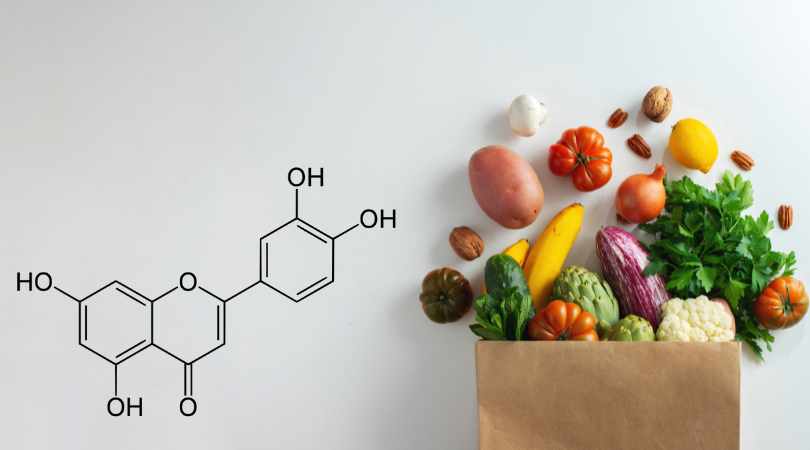Scientists have successfully restored the lost uricase enzyme, a key breakthrough in combating fructose-induced fat formation. This discovery offers new hope for preventing obesity and metabolic disorders by targeting how the body processes sugar and stores fat.
Limited Quantities Available! Order Today and Enjoy Free Shipping on Orders Over $100!
NAFLD (Fatty Liver)
A condition where fat builds up in the liver, often driven by excess fructose intake or internal fructose production.
Not All Liver Fat Comes From Alcohol
NAFLD now affects over 1 in 4 adults—and fructose, not fat, may be the real culprit.
Unlike glucose, fructose is shuttled directly to the liver, where it’s rapidly converted to fat. This process happens silently, even in people who don’t consume obvious sugar, because the body can generate fructose internally under stress, high-carb intake, or dehydration.
SugarShield supports a healthier liver environment by helping manage the downstream effects of fructose metabolism. With ingredients studied for their impact on liver fat, uric acid, and mitochondrial function, it’s a science-driven tool for restoring metabolic balance.
Explore SugarShieldShort Definition
A disease of fat build in the liver associated with insulin resistance and metabolic syndrome, often triggered by excess fructose intake or internal fructose production.
What is NAFLD (Non-Alcoholic Fatty Liver Disease)?
Non-alcoholic fatty liver disease, or NAFLD, a condition where fat builds up in the liver independent of alcohol consumption. It affects one-third of people with increasing prevalence among children in developing countries1. It is of particular importance as NAFDL can progress to cirrhosis or fibrosis, and even to liver cancer. The condition ranges between steatosis (small fat accumulation that does not induce inflammation or cell damaging) to a more serious degree – non-alcoholic steatohepatitis (characterised by liver inflammation and potential scarring)3.
Often NAFLD is asymptomatic or can be reversed with lifestyle changes. However, it is one of the fastest-growing chronic diseases globally and is strongly associated with metabolic syndrome that often goes undiagnosed because symptoms are subtle – if they appear at all – in the early stages. Unlike alcoholic liver disease, NAFLD can affect people who are slim, active, or don’t consume much dietary fat. The common symptoms of NAFLD are: fatigue, mild discomfort in the right upper abdomen. It can be diagnosed by ultrasound and MRI checkups, blood samples investigation, and liver biopsy.
The true driver is often hidden in plain sight: fructose. Often overlooked, fructose metabolism has been found to induce insulin resistance, obesity and type 2 diabetes – main risk factors of developing NAFLD. At Liv3 Health we aim to address the complex relationship between fructose consumption and development of NAFLD caused by metabolic dysfunction, with the goal of finding ways to mitigate potential risks and promote healthier dietary choices through SugarShield.
How Does NAFLD Develop?
The liver’s primary role is to process nutrients and detoxify the blood. However, in the modern diet we consume fructose – a monosaccharide commonly known from table sugar (sucrose: 50% glucose and 50% fructose), fruits, high fructose corn syrup, manufactured food or sugary drinks and could be even created internally – in overdoses that puts liver cells in metabolic stress, leading to the development of NAFLD.
The mechanism is simple, yet dangerous. When fructose enters the cell it is immediately converted into fructose-1-phosphate by the enzyme fructokinase, depleting ATP (cellular energy). It is an unregulated process that drives uric acid production (a byproduct that impairs mitochondrial function and induces oxidative stress and inflammation) and the process of de novo lipogenesis - conversion of excess energy to triglycerides (fat). This fat accumulates in liver cells in a process known as hepatic steatosis. This pathway is unique to fructose, as other carbohydrates such as glucose do not trigger the same rapid ATP depletion and fat production. This means even a modest amount of fructose can cause a sharp spike4.
Over time, as liver fat increases, the body becomes less responsive to insulin, even if blood sugar levels are still in a “normal” range. This condition is known as insulin resistance - a core feature of a wide array of metabolic syndromes. It impairs energy production by decreasing glucose uptake having even more fat accumulation and promotes type 2 diabetes mellitus, driving the progression of NAFLD to non-alcoholic steatohepatitis.
Uric acid contributions.
Uric acid is a silent trigger of insulin resistance that is often underestimated. A byproduct of fructose metabolism, uric acid, when elevated (known as hyperuricemia), induces hepatic insulin resistance5. It directly inhibits cell signalling, promotes inflammation and oxidative stress, reduces levels of nitric oxide (that is crucial for insulin to stimulate glucose uptake) negatively affecting progression of NAFLD.
In short, fructose is uniquely problematic because:
- It’s metabolized almost entirely in the liver;
- It bypasses insulin regulation and energy-sensing checkpoints;
- It rapidly depletes ATP, the energy currency of the cell;
- It drives de novo lipogenesis—the synthesis of fat from non-fat sources
Therefore, constant high fructose levels trigger a cycle of metabolic processes that bypasses insulin regulation and promotes fat accumulation.
The Silent Driver: Endogenous Fructose
Even if you avoid sugar, your body can still produce fructose internally—a process called endogenous fructose production. The process is triggered by stress, high glucose or salt intake, or dehydration6. The mechanism is called polyol pathway – conversion of excess glucose to sorbitol (carbohydrate derived from sugars also known as polyol), which is then converted to fructose. That means its effects can be felt even on a low-sugar or sugar-free diet.
It can be triggered by:
- eating a high-carb or high-salt diet;
- dehydration;
- chronic stress;
- alcohol consumption.
This means that fatty liver disease can develop even on a sugar-free diet, if internal fructose production is active.
From Fatty Liver to Serious Disease
NAFLD is a wide term used to describe the range of diseases related to hepatic fat infiltration without alcohol contribution. If left unaddressed, NAFLD can progress to hepatic dysfunctions through several stages such as:
- Simple steatosis – fat accumulation in the liver;
- NASH (Non-Alcoholic Steatohepatitis) – fat, inflammation, and liver cell damage (leaving scars). Necroinflammation (process of uncontrolled cell death due to inflammation and cell damage) indicates its presence;
- Fibrosis – scar tissue begins forming in response to chronic damage. It is a disease of accumulation of excessive fibrous (connective tissue) that lead to cicatricial changes. Overtime, fibrosis destroys liver structure;
- Cirrhosis – irreversible advanced liver scarring and impaired function. It can be considered as a continuation of fibrosis causing liver blood flow disturbance and high risk of developing hypertension;
- Liver cancer (Hepatocellular carcinoma);
- Cardiovascular failure (the main death cause of NAFLD).
NAFLD is also associated with an increased risk of type 2 diabetes and chronic kidney disease.
A New Approach to Liver Health
Based on animal studies, fructose now is recognized as the main mediator of NAFDL, and emerging human data suggest the same pattern. Fructokinase, the enzyme responsible for the first step in fructose metabolism, may be a critical control point in liver health.
Simple breakdown:
- Fructose consumed (or produced through poly pathway) and broken down to fructose-1-phosphate;
- Depletes cellular energy;
- Increases uric acid (which drives oxidative stress and inflammation);
- Triggers fat accumulation.
This makes fructokinase – and the fructose pathway more broadly – a compelling target for managing NAFLD. Traditionally, doctors recommend focusing on a lifestyle to manage NAFLD: focusing on cutting calories or losing weight. However, these strategies often overlook the biochemical root cause: fructose metabolism. Modern studies focus on possible biochemical management of the disease:
- Reducing fructose intake
- Modulating endogenous fructose production
- Supporting mitochondrial and liver function
- Blunting the fructokinase pathway
At Liv3 Health we target the very beginning of the metabolic dysfunction cycle – fructokinase, the enzyme that kickstarts and accelerates fructose metabolism. The mechanism underlying SugarShield fructose control is liposomal delivery of active ingredients: luteolin, a flavonoid found in various fruits and vegetables that enhances anti-inflammatory and antioxidant defenses and has been shown to directly inhibit fructokinase; tart cherry extract, rich in anthocyanins, also supports metabolic health by lowering inflammation and uric acid. By blocking fructokinase we aim to stop fructose from draining cellular energy, restore your energy, improve metabolic health, and offer metabolic support that goes beyond diet alone. By understanding how NAFLD develops at the molecular level, we can begin to reverse it – not just manage the symptoms.
These statements have not been evaluated by the FDA. This product is not intended to diagnose, treat, cure, or prevent any disease.
References
- Cohen, J. C., Horton, J. D., & Hobbs, H. H. (2011). Human fatty liver disease: old questions and new insights. Science (New York, N.Y.), 332(6037), 1519-1523. https://doi.org/10.1126/science.1204265
- Pablo Muriel, Pedro López-Sánchez, & Erika Ramos-Tovar. (2021). Fructose and the Liver. International journal of molecular sciences, 22(6969). https://doi.org/10.3390/
- Prasanthi Jegatheesan, & Jean-Pascal De Bandt. (2017). Fructose and NAFLD: The Multifaceted Aspects of Fructose Metabolism. Nutrients, 9(230). https://mdpi-res.com/nutrients/nutrients-09-00230/article_deploy/nutrients-09-00230-v2.pdf?version=1488790824
- Softic, S., Stanhope, K. L., Boucher, J., Divanovic, S., Lanaspa, M. A., Johnson, R. J., & Kahn, C. R. (2020). Fructose and hepatic insulin resistance. Critical reviews in clinical laboratory sciences, 57(5), 308-322. https://doi.org/10.1080/10408363.2019.1711360
- Yuzhang Zhu, Yaqiu Hu, Tianliang Huang, Yongneng Zhang, Zhi Li, Chaohuan Luo, Yinfeng Luo, Huier Yuan, Ichiro Hisatome, Tetsuya Yamamoto, Jidong Cheng. (2014). High uric acid directly inhibits insulin signalling and induces insulin resistance. Biochemical and biophysical research communications, 447(4), 707-714. https://doi.org/10.1016/j.bbrc.2014.04.080
- Lanaspa, M. A., Ishimoto, T., Cicerchi, C., Tamura, Y., Roncal-Jimenez, C. A., Chen, W., Tanabe, K., Andres-Hernando, A., Orlicky, D. J., Finol, E., Inaba, S.,, & Li, N., Rivard, C. J., Kosugi, T., Sanchez-Lozada, L. G., Petrash, J. M., Sautin, Y. Y., Ejaz, A. A., Kitagawa, W., Garcia, G. E., … Johnson, R. J. (2014). Endogenous fructose production and fructokinase activation mediate renal injury in diabetic nephropathy. Journal of the American Society of Nephrology : JASN, 25(11), 2526–2538. https://doi.org/10.1681/ASN.2013080901






